
Can architecture initiate a vision for a city’s post-Anthropocene future?
HooWave Township & Waterfront Landscape Design
Competition
Nantun District, Taichung City
2022
Before the 19th century, the Beigang River and its riparian landscape operated in a symbiotic fashion: the flooded river supported terrestrial ecology.
But modern infrastructure, specifically the flood control dike, broke that link and replaced it with an over-engineered landscape focused on efficiency and control. The river became an isolated conduit and the landscape an industrial territory, with concrete channels supplying water. Modernity tamed the volatile river and reformed water distribution to serve the Anthropocene.
Our priorities have shifted again as we now recognize the value of healthy ecosystems and landscapes
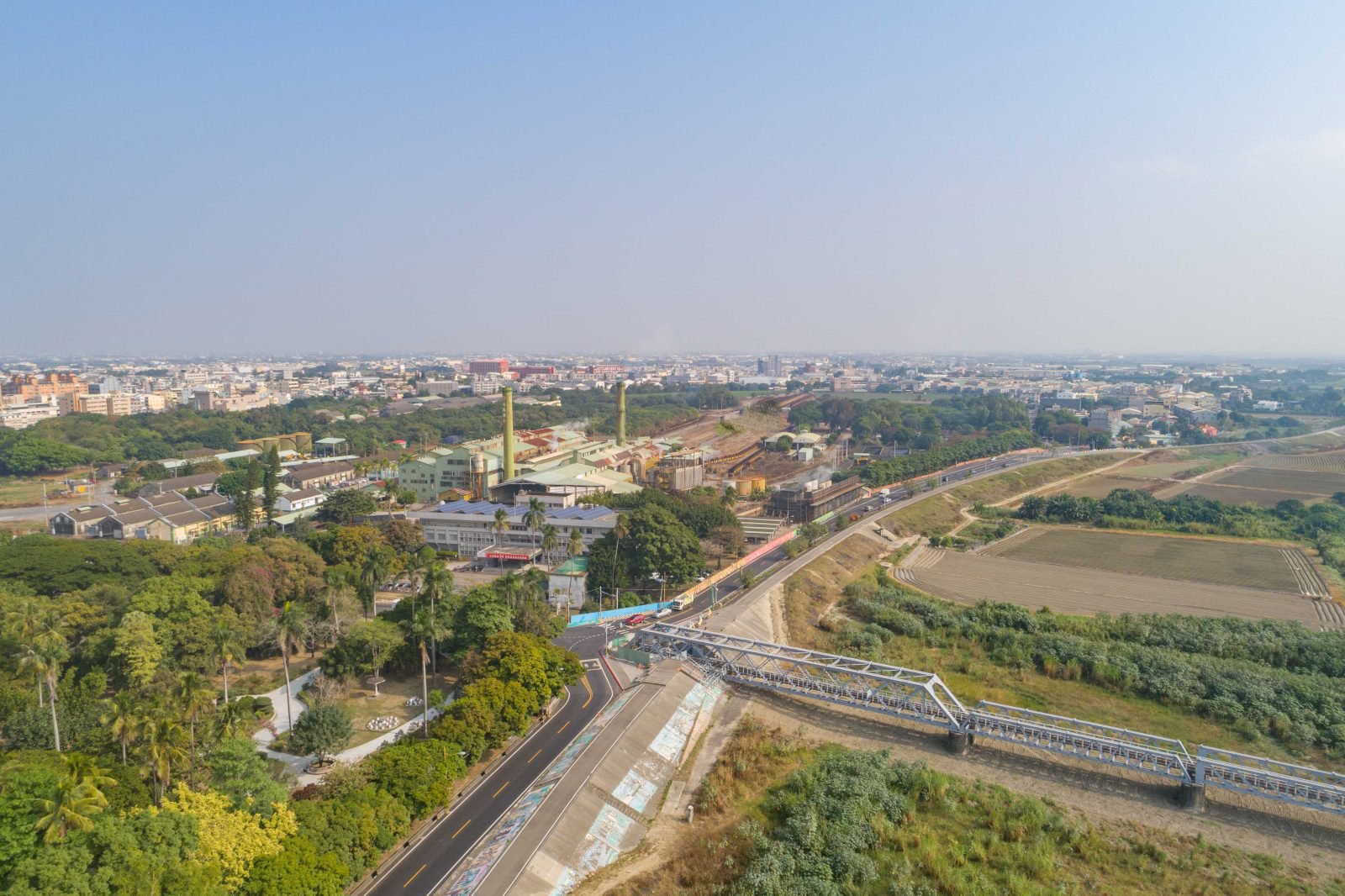
The project brief calls for a Landscape Stitch to reconnect land and river across the dike. Healthy landscapes are connected landscapes, so broken connections must be mended.
The stitch is an apt metaphor for this work. However, our proposal aims further and operates with more nuance, since Huwei faces other challenges beyond its river barrier. These issues and opportunities extend beyond the immediate territory of the river and reach into the larger watershed. Infrastructure of the past has divided the landscape into a series of disparate patches and discontinuous lines, each operating independently without clear relationships.
We aim to make the plain whole once again.
Rather than a simple stitch, we propose a “Quilt” of landscapes brought together to form a new, future-forward vision for a reconnected Huwei. A stitch is a line, but a quilt is a patchwork of panels and lines whose interactions create a whole. In our proposal, buildings operate together with streets, streets with channels, and channels with rivers. These lines no longer represent a division but a connection between two more certain figures. Edges remain but are far more complicated and variable, creating an opportunity for exchange between one patchwork and the next.
Our design concept is centred around three themes: Blue network/Social Network Intersections, Complex, Productive Edges, Stronger figures
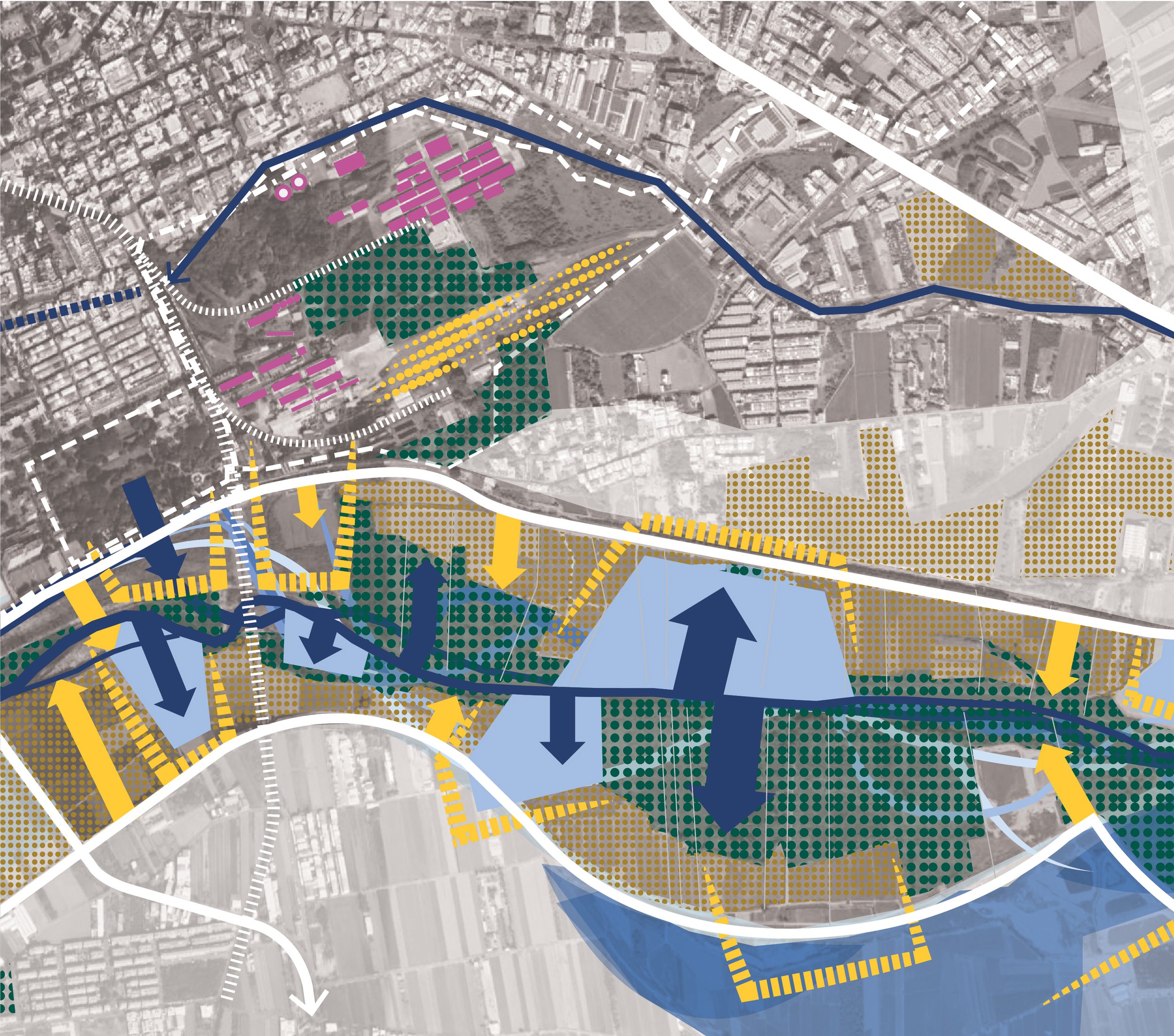
Blue network/Social Network Intersections
A successful landscape framework depends on both healthy ecological systems and social networks. Making our urban environments and dynamics as inclusive as possible is necessary to achieving resiliency. For too long, our single-purpose infrastructure has been employed at the expense of the people it supports. Social benefits were costs too steep to justify the capital costs.
Complex, Productive Edges
As we have said, edges still exist; however, we propose revisiting them to make them more diverse and complex to facilitate movement across the landscape. All urban species, whether insects, microbes, mammals, birds, plants or people, require mobility.
Stronger figures
Productive landscape spaces have clarity and purpose. As we restructure the edges, new figures will emerge that will provide space for people and nature.
The proposal merged a conceptual approach to the project brief with our professional experience to create a vision for a new Huwei Township. The conceptual approach breaks down into four sections. The first looked at reshaping the landscape to reduce flood risks. The second described a new blue/green network that will emerge from these new infrastructural installations. We then looked in more detail at specific approaches for the river, channel and retention pond. Finally, we introduced a path to the existing cultural landscape and how it will merge with the future “Water City.”


Critical Spaces

Landscape Links
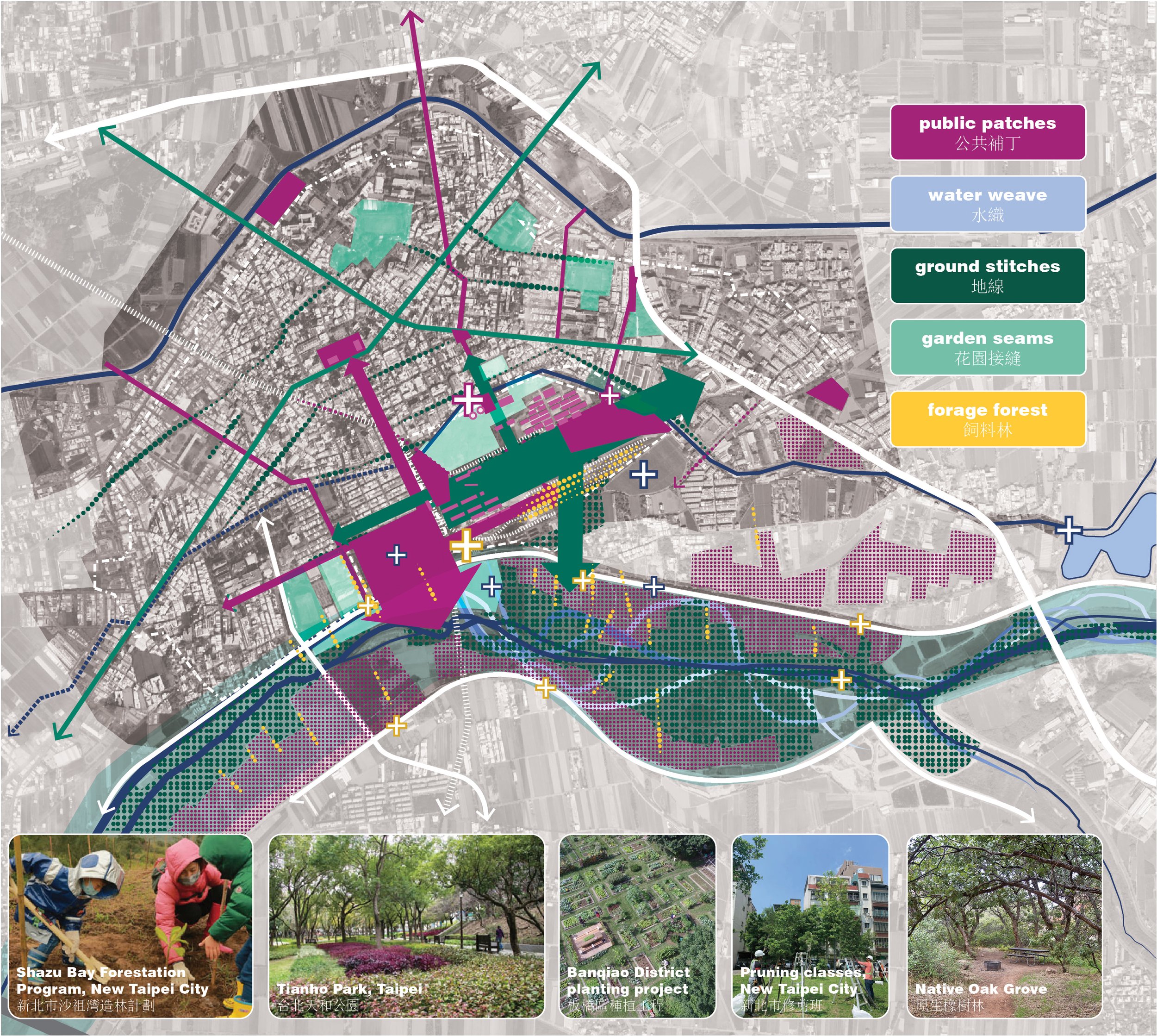


Line, figure, and field: each form shares a common approach that centres on creating more complex conditions at the edge or, ecologically, the ecotone. The transition zone between two figures can be the most productive and the most critical portion of a landscape.
The Beigang River, the Anqing Channel, and the Pinghe Flood Detention Pond are all bordered by thin, undifferentiated lines. Whether concrete or tree-lined, these edges are barriers to access and active ecological function.
Thickening and intensifying these borders is vital to improving each landscapes’ environmental, social, and experiential qualities.
A second aspect of our conceptual approach for these water figures will be to make each of these features more visible to the surrounding community.
Out-of-sight, out-of-mind is a typical approach to public infrastructure. Once built, the dams, dikes, ditches are mostly overlooked. It is only with failure that the systems that support our lives become visible again. Of course, the implication is that we rarely question the effectiveness of our infrastructure, especially as those systems age, until it’s too late. This approach has not always been the case, however.
Many communities live more directly and reciprocally connected with their infrastructure and, in turn, are more readily aware of their performance. Few people in cities could tell you when the high river flows occur, but residents in rural communities are often acutely aware of seasonal fluctuations.
Our task, therefore, is to reconnect the community of Huwei to these infrastructural features, making them more present in the everyday flows of life. Greater awareness will help ensure the community understands the importance of these systems and also give people a greater appreciation for the aesthetic and environmental qualities of their ubiquitous infrastructure.
Seeing landscape infrastructure not only as a productive tool but also as a social and cultural opportunity will allow the project to achieve its goal of creating an innovative Water City that is robust and resilient in an uncertain future.
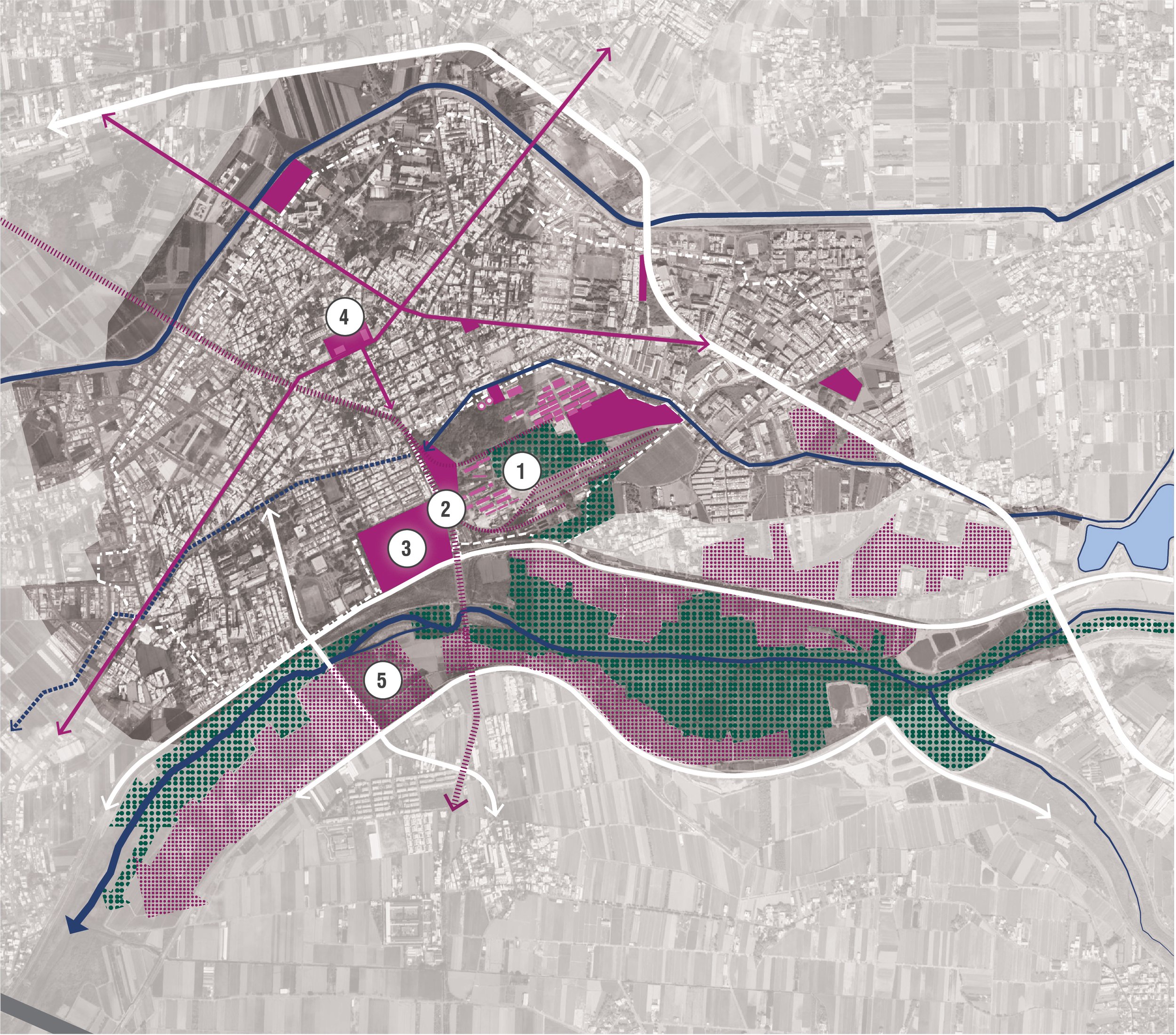
Cultural Sites
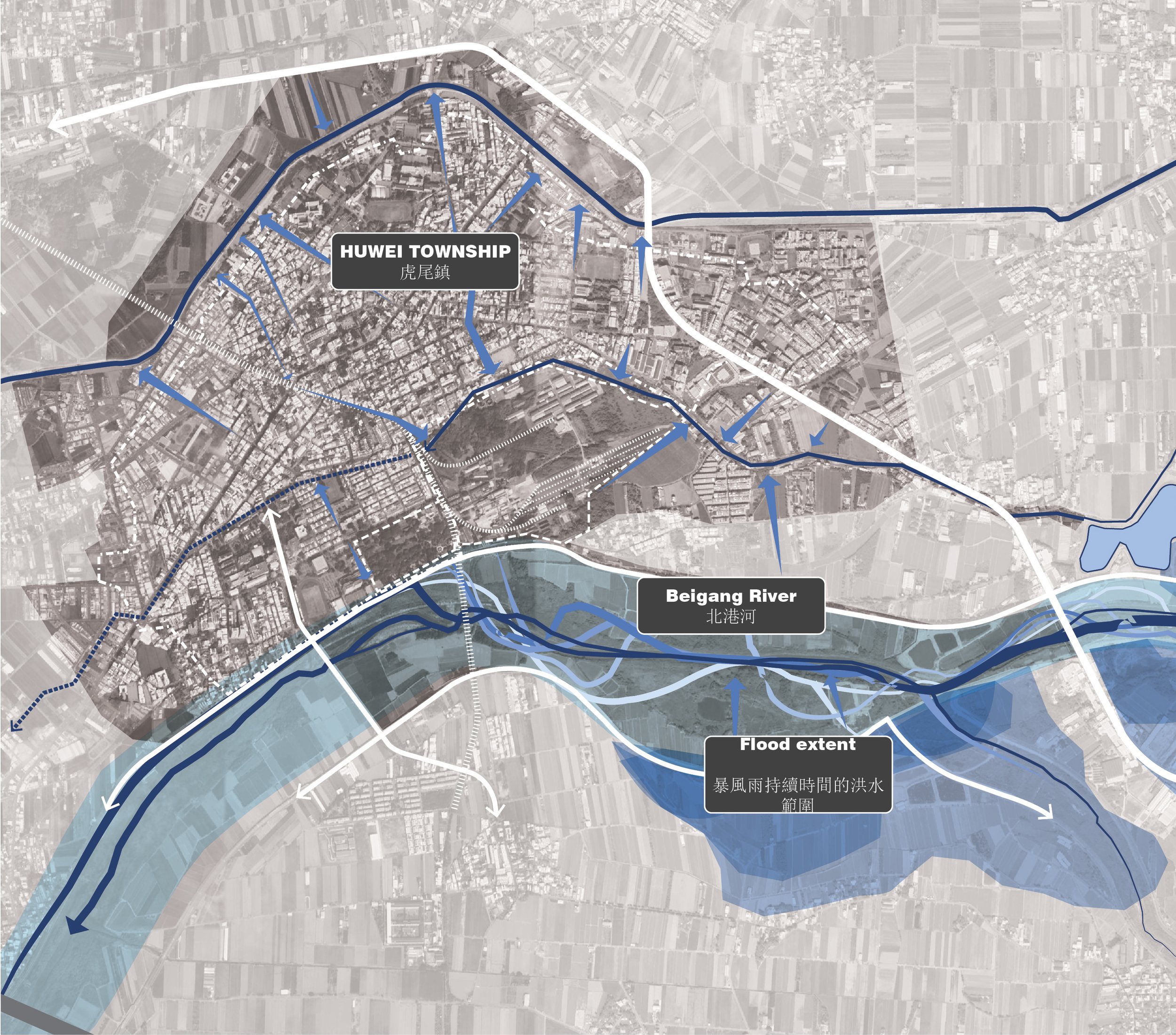
Wasterscape
-
JIM
James Huemoeller, Nick Penner
-
Landscape Architect
